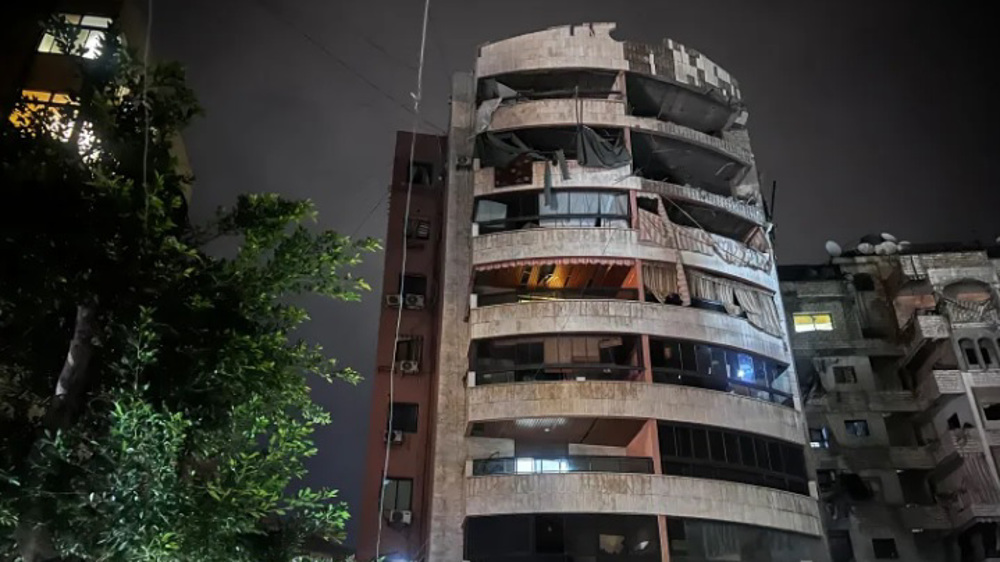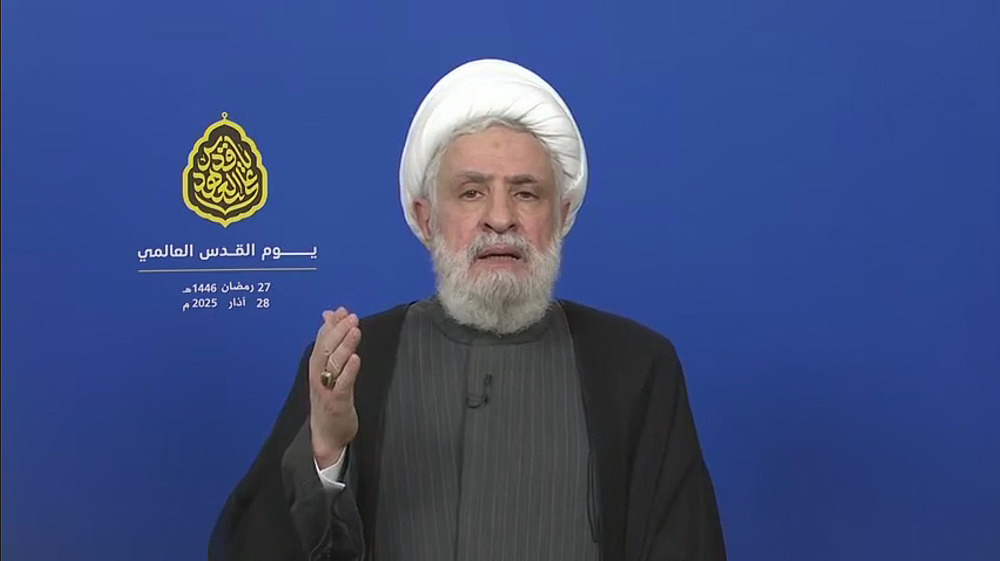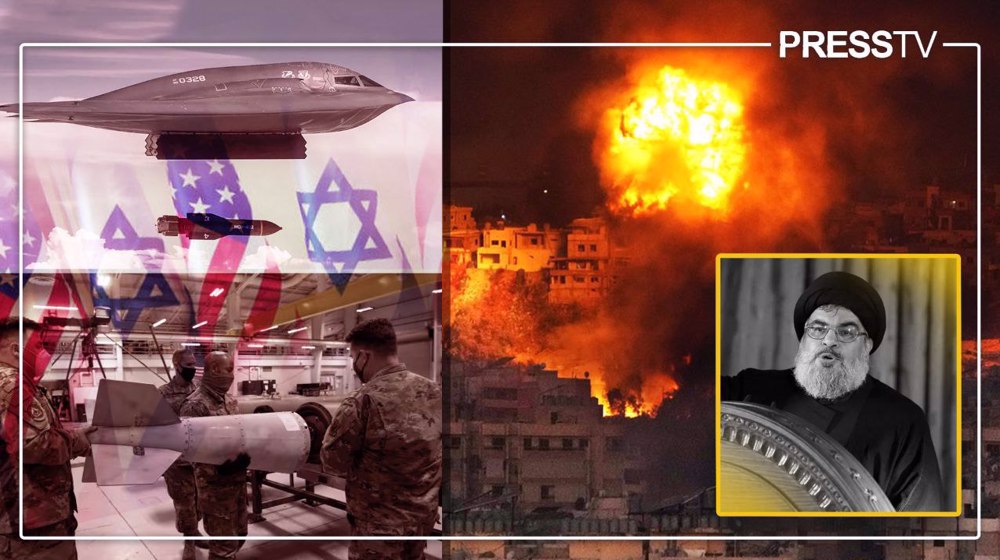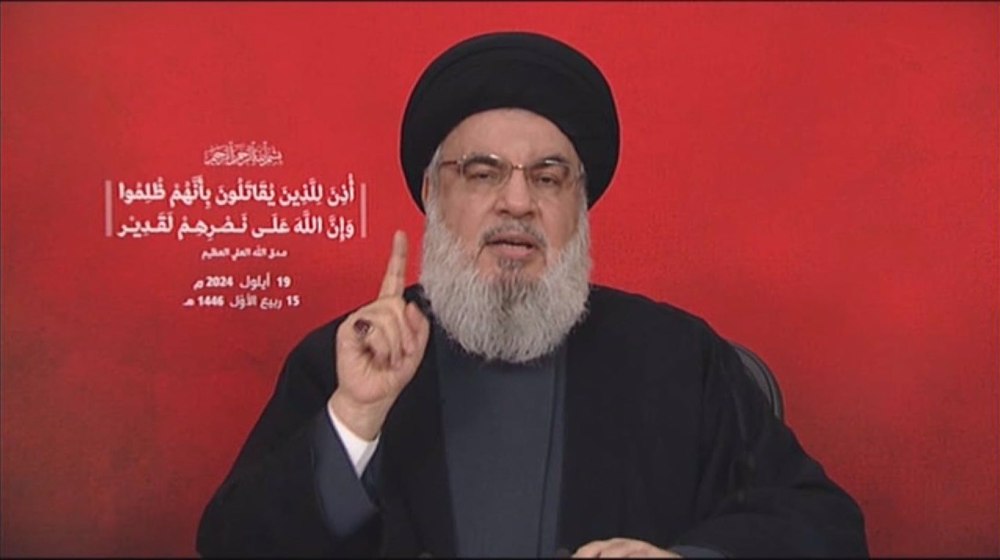Explainer: What are US-made ‘bunker-buster bombs’ Israel used to assassinate Nasrallah
By Alireza Akbari
On Friday, Israeli fighter jets targeted at least six residential buildings in the southern suburb of Beirut with at least 85 US-made bunker-buster bombs, each carrying a ton of explosives.
These lethal bombs, typically reserved for underground facilities and military sites, were deployed in Beirut and claimed several lives, including that of Hezbollah leader Sayyed Hassan Nasrallah.
The devastating onslaught leveled six residential apartment complexes, reducing them to rubble, and drawing widespread condemnation and outcry across the world.
The target of the attack was Nasrallah and other senior Hezbollah officials and it took place when Israeli premier Benjamin Netanyahu was in New York to attend the UN General Assembly session.
American government spokespersons were quick to feign ignorance about the targeted attack but President Joe Biden's statement defending the terrorist crime exposed the US complicity.
According to reports, Netanyahu received the green light from the Biden administration to carry out the dastardly attack, risking further escalation in the region.
What is a bunker buster bomb?
Bunker buster bombs, also known as ground penetration munitions, are specialized missiles designed to burrow deep into the ground before detonating. They are capable of destroying reinforced concrete structures and underground facilities.
Each bomb weighs between 900 and 1,800 kilograms, with the ability to penetrate up to 30 meters of earth or 6 meters of concrete. Upon detonation, bunker busters generate powerful shockwaves that can collapse heavily fortified structures.
Developed by the American military, these bombs are engineered for specific targets like military bunkers, underground installations, and hardened sites that conventional munitions cannot breach.
Israel committing ‘domicide’ in Lebanon by targeting civilian buildings: UN rapporteurhttps://t.co/GPUf2qsbTj
— Press TV 🔻 (@PressTV) September 28, 2024
Mechanism of bunker buster bombs
Bunker buster bombs are precision-designed to breach fortified structures, penetrating deep before releasing their destructive force. They begin with penetration, utilizing a hardened steel casing to break through concrete, earth, or steel layers.
The kinetic energy from bunker busters' high-speed impact allows them to drill deep into targets.
A delayed fuse ensures the bomb explodes only after reaching a specific depth, maximizing damage to underground bunkers. The bomb's high-explosive payload then detonates, delivering immense destructive power, making them effective against even the most reinforced military targets.
Sections of a bunker-buster bomb
A bunker buster’s anatomy is engineered for precise penetration and destruction. The casing, or penetrator, is a robust steel shell designed to withstand high impact with the ground before detonation.
For instance, the GBU-28 can pierce over 30 meters of earth or 6 meters of reinforced concrete. Inside, the warhead houses high-yield explosives, such as Tritonal, with some models carrying up to 287 kg of it.
Modern bunker busters are equipped with sophisticated guidance systems like laser or GPS/INS, ensuring pinpoint accuracy. The fuse, usually in the tail section, controls detonation timing based on the depth of penetration.
Types of bunker buster bombs
Bunker busters come in various models for different operational needs. The GBU-28, introduced during the Gulf War in 1991, can drill deep into command centers and bunkers.
The GBU-39 Small Diameter Bomb offers a lighter version with a smaller payload but still retains enough power to penetrate reinforced targets.
At the extreme end, the GBU-57 Massive Ordnance Penetrator (MOP) delivers unmatched penetrating power, capable of reaching deeper into underground facilities than any other bomb.
The people of Lebanon mourn Sayyed Hassan Nasrallah's martyrdom over the ruins left by the Israeli attack pic.twitter.com/UGmMbn0eL3
— Palestine Highlights (@PalHighlight) September 28, 2024
US military's bunker-buster bombs
GBU-28: Originally developed during the 1991 Gulf War, this laser-guided bomb weighs approximately 5,000 pounds. Designed to destroy Iraqi military bunkers, its casing is crafted from surplus artillery barrels, allowing it to penetrate concrete or earth before detonating.
GBU-31 (JDAM): This bomb is part of the Joint Direct Attack Munition (JDAM) series, which includes a GPS-guided system for precision targeting. When paired with the BLU-109 penetrator warhead, it can effectively strike deeply buried targets, offering both precision and power.
GBU-37: the GBU-37 is GPS-guided, making it effective in poor weather conditions. Designed to target underground military facilities, its guidance system ensures accuracy even against deeply buried bunkers, unlike the laser-guided GBU-28.
GBU-57 (Massive Ordnance Penetrator - MOP): The most powerful bunker buster in the US arsenal, the GBU-57 weighs around 30,000 pounds. It is engineered to penetrate deeply reinforced facilities and can penetrate up to 200 feet of concrete, making it capable of targeting the most fortified underground structures.
US shipments of bunker-buster bombs to Israel
The US arms supplies to Israel include shipments of bunker-buster bombs.
- 2005: The US transferred 100 GBU-28 bunker-buster bombs to the Israeli regime.
- 2008-2009: Following the Israeli war on Gaza, the US sent additional military supplies to Israel, including munitions.
- 2014: The US again provided bunker-buster bombs to the Israeli regime amid escalating tensions in the region.
- 2021: During the Israeli regime's aggression against Hamas, the US shipped more munitions, which included bunker-buster bombs.
- 2023: The most recent shipment involved over 1,000 bunker-buster bombs as part of a $6.5 billion military aid package. This shipment also included thousands of other munitions, such as MK-84 bombs and Hellfire missiles.
Israeli regime continues indiscriminately attacking Beirut’s southern suburbs. pic.twitter.com/qRrLVfFzea
— Palestine Highlights (@PalHighlight) September 28, 2024
Deployment of bunker-buster bombs by Israel
Since receiving bunker-buster bombs from the United States, the Israeli regime has reportedly deployed them in densely populated areas in Gaza since October 2023 when the Israeli regime launched its genocidal war against Palestinians in the coastal territory.
- Jabalia Refugee Camp: The Israeli army dropped bunker-buster bombs in this heavily populated area, resulting in the deaths of at least 50 Palestinians.
- Al-Shifa Hospital: Bunker buster bombs were also dropped on Gaza’s largest medical facility, leading to numerous civilian casualties, including patients and medical staff.
- Khan Younis: Israeli forces targeted areas in and around Khan Younis, another densely populated region in southern Gaza, resulting in hundreds of Palestinian deaths.
US deployment of bunker-buster bombs worldwide
The US military has also deployed bunker-buster bombs in several countries:
- Tora Bora, Afghanistan: For the first time, GBU-28 bunker-buster bombs were used in December 2001 during the invasion of Afghanistan.
- Iraq: In March 2003, bunker-buster bombs were employed during the invasion of Iraq to target underground installations.
- Libya: During NATO’s military invasion of Libya in March 2011, the US used bunker buster bombs against Libyan leader Muammar Gaddafi’s underground bunkers in Tripoli.
- Raqqa, Syria: In March 2017, bunker-buster bombs were used in Raqqa.
- Yemen: From 2015 to 2018, US-made bombs, including bunker busters, were dropped in civilian areas in Yemen, causing significant casualties.
-
UNRWA chief: Lebanon’s displaced ‘traumatized by bombardment’ https://t.co/tSNO96ZdrR
— Press TV 🔻 (@PressTV) September 28, 2024
Legal framework governing use of bunker-buster bombs
Regarding the deployment of bunker busters, key international legal frameworks emphasize the protection of civilians and adherence to the principles of International Humanitarian Law (IHL):
- Fourth Geneva Convention (1949) and Additional Protocol I (1977): These foundational treaties prohibit attacks that fail to distinguish between military objectives and civilians or civilian objects. Bunker-buster bombs, by nature of their design, must only be directed at legitimate military targets.
Their use in civilian areas, such as densely populated regions, would constitute a violation of these conventions, which form the cornerstone of IHL.
- International Court of Justice (ICJ): In its advisory opinions, the ICJ has reaffirmed that all military actions, including the deployment of bunker busters, must adhere to IHL principles, particularly distinction (targeting only combatants and military objectives), proportionality (minimizing harm to civilians), and necessity (ensuring the military advantage is imperative).
Violations of these principles can result in international condemnation and legal consequences.
- Rome Statute of the International Criminal Court (ICC): According to the Rome Statute, the use of weapons that cause indiscriminate harm, including bunker-buster bombs, may constitute war crimes if they lead to excessive civilian casualties or target non-military structures.
Article 8 of the Statute particularly addresses attacks that cause widespread, long-term, and severe damage to the civilian population.
- United Nations Human Rights Council (UNHRC): The UNHRC has consistently criticized the use of bunker busters in civilian areas, citing potential violations of IHL.
In numerous resolutions, the Council has highlighted concerns over civilian casualties resulting from such weapons, calling for accountability and adherence to international legal standards.
- Customary International Humanitarian Law (IHL): Customary IHL requires that the use of any weapon with the potential for massive destruction, such as bunker busters, must be restricted to lawful military targets.
This framework asserts that any military operation should not cause excessive harm to civilian lives or property, a key principle guiding lawful military engagement.
The failure to comply with this may lead to accusations of disproportionate use of force and subsequent legal action under international law.

At least four killed in new Israeli aggression on Beirut despite truce

Israeli military targets two buildings in southern Lebanon in violation of ceasefire

Iran a central supporter of Palestinian cause; Israel a demonic entity feeding off US: Hezbollah
Hind Rajab Foundation to file legal action ahead of Netanyahu’s planned trip to Hungary
VIDEO | Iran marks Islamic Republic anniversary
Russia warns of ‘catastrophic’ consequences if US attacks Iran
No such thing as ‘military option’ let alone ‘military solution’ to nuclear issue: Iran
Iran VP opens privately-owned $150 mln hotel in north Iran
Iran urges IAEA to take a clear stance against threats to its nuclear facilities
Palestinian teenager dies in Israel's jail after being held 6 months without charge
Pro-Palestinian student leaves US amid deportation threats












 This makes it easy to access the Press TV website
This makes it easy to access the Press TV website